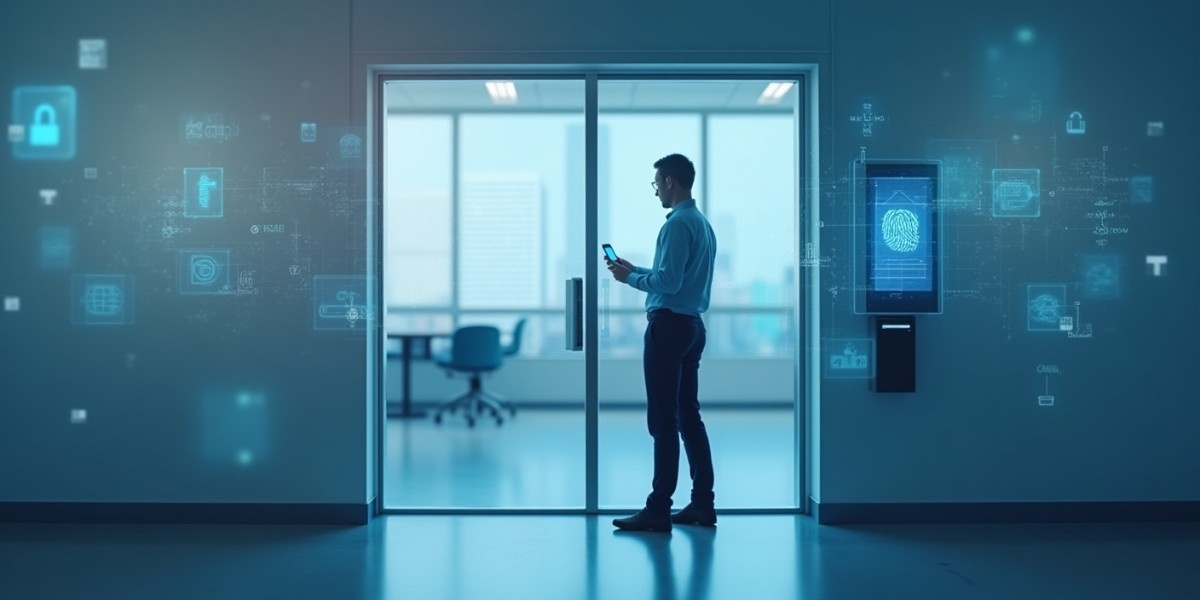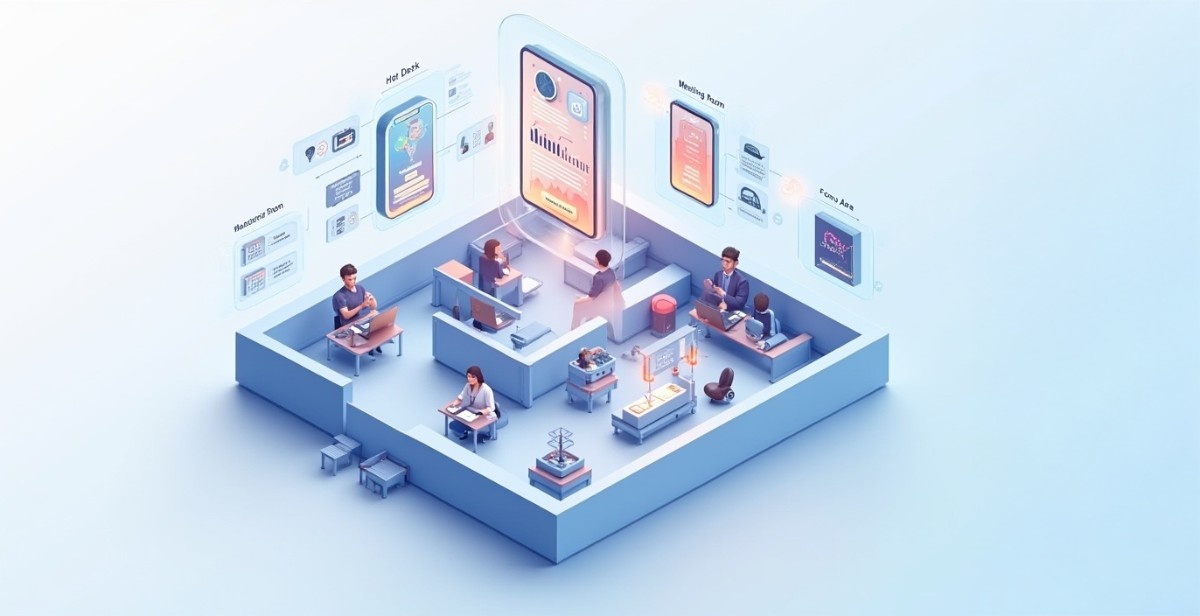Office and building admins, both interact with multiple real estate management software and building management software daily. There is a building automation system for organisations of all sizes.
Everyone uses their smartphones and the numerous applications installed in them to carry out day-to-day activities as they increase convenience. Apps like calendars, WhatsApp, and Gmail are used by all, irrespective of profession, age and interest.
Properties management systems and other Building automation software have a niche audience and are useful to the likes of facility managers to reduce efforts.
Days before workplace productivity apps and other building maintenance systems the first mobile app was a built-in version of the arcade game “Snake” in the 1997 Nokia 6110. Similarly, the first iPod also came with Solitaire and Brick.
In 1983, Steve Jobs envisioned a place where software could be purchased over phone lines. This idea would give rise to the iTunes store, a precursor to the Apple App Store. The iPhone was released in June 2007 and just over a year later, the App Store was launched in July 2008. Three months later, it’s competitor the Google PlayStore, formerly known as the Android Market, released on the 22nd of October.

Know Your App:-
A 2020 survey conducted by Buildfire suggested that there are 1.96M apps available on the Apple App Store and 2.87M apps on the PlayStore available for download. Apps are classified into three broad categories, Native, Hybrid, Web and Progressive Web Apps.
Native Apps:-
Native Apps are single platform apps exclusively built for one Operating system. These are native to particular devices or platforms. Apps developed for one Operating System, cannot be used on another OS. In other words, Android apps can’t operate on an iPhone. They use tools and languages that the respective platform supports. The native apps ensure high performance and superior user experience as the developers use the native device UI. Native apps are accessible via their respective app stores – Google PlayStore or the App Store.
Mobile Web Apps:-
These are applications that deliver web pages on browsers running on mobile devices. These are web-based mobile apps that are not installed on a handheld mobile device and run on web-hosted servers.
Hybrid Apps:-
Hybrid apps are combinations of native and mobile web apps. Like native apps, they are downloaded from app stores and take advantage of the many device features available. Similar to web apps, they rely on HTML rendering in a browser. With the caveat that the browser is embedded within the app.
This classification is only the tip of the iceberg as all apps that exist tend to serve a purpose, make day-to-day tasks simple and fulfil a need. One app tells you about the stock market, the other helps you order food, and the third assists in communication.
Based on their functionality, these apps can either be Business Apps, Utility Apps, and leisure apps and are used by working individuals on a day to day basis. We would be focusing on business apps, and utility apps as these are the ones used the most by the working people.
Business Apps:-
Also known as productivity apps, they are the second most demanded app among users. Buying, selling, billing, sending emails, there are a variety of free and paid business apps. One app or service may provide multiple building automation systems, real estate management systems and other properties management systems that help one carry out business and CRM functions. These include sending emails, providing support, automating communications and scheduling calls. Business apps are created for B2B or B2C purposes. These apps increase productivity and reduce expenses for a business. At the same time, they offer maximum convenience and widen the audience pool in the market.
Utility Apps:-
These apps are used by us every day. Digital wallets like Google Pay and Venmo, rideshare apps like Uber and Lyft, integrated food delivery apps such as Zomato and Ubereats or individual restaurant apps, like Domino’s or Mcdonald’s apps like Utility apps are ideal for shortest user sessions times.

These apps help get things done early and with ease. Multiple apps perform the same function. One such example is Uber and Lyft. Both are rideshare apps and help one get from one place to another by booking a vehicle with a click of a button.
Leisure, Social Media, and Messaging Apps:-

These apps are not essential to carry out daily business activities. However, users spend hours on them, and they provide the highest level of personalised content. These include the likes of video streaming apps such as Netflix, Prime Video and Hulu, messaging apps like WhatsApp and Facebook Messenger and Video.
The Problems:-
A property management system, a building automation systems, real estate management software, coworking booking systems are some of the workplace software that facility managers, building owners, and office admins interact with on a day to day basis.
These provide solutions to numerous problems, but the challenge is that there are numerous apps. Multiple apps lead to multiple problems. One problem is the duplication of functionality. One app may perform certain functions and another app may perform another function, but, at times they both perform some similar functions, taking up space and duplicating efforts.
So, Why be a ‘One-App’ Workplace?
Authentication schemes, like Single Sign-On, that allow users to log in with a single ID and password to any of several related, yet independent, software systems, have made the role of “password-keeping” apps redundant. , The concept of one app with one login in ID and password that saved all other ids and passwords, had its own pros and cons.
Apps like Instagram, Snapchat,and Whatsapp now offer similar features such as disappearing messages and images, swipe to reply and the most recent stories. The aim of the parent company, Facebook is to provide a unified user interface to all users across all platforms, making the shift easy.
Which in fact gives rise to the importance of unified apps. Multiple apps are already installed on smartphones. These devices are used for both personal and professional work. Having multiple office related apps that help in booking rooms, ordering from the canteen, booking parking and maintaining support add on to this list.
The aim of all apps is to increase user engagement. They do so by giving constant, personalised push notifications. 75% of the notifications that we receive in a day are promotional. While a cluttered notification bar is a pet peeve for everyone, these notifications also take precedence over important notifications.
Having one app gets rid of excess apps and notifications, remembering multiple credentials and most importantly clears up space on the phone, no matter how insignificant it is.
These benefits are but obvious in a unified app. Veris One aims to provide you with a unified app for a unified workplace and provides you with the same interface all across. Switching apps also leads to getting used to a new layout, a new system and most importantly a new process. A unified app such as Veris One removes the confusion caused and provides a clear, one stop, and smooth experience.
How did we solve this problem?
We at Veris envisioned a unified solution, that would remove the hassle of multiple logins, multiple accounts and duplication of features. A unified solution that acts as a booking app, food ordering system, visitor and delivery tracking system.

So, what is this solution?
Veris One is a unified multi-layered ecosystem that aims at creating augmented and memorable experiences using the physical space and moving away from thinking about just its functional uses. Veris one Combines rich experience & expertise in the domain of the intelligent workplace, and provides an AI-powered platform, helping you to offer a host of intelligent, on-demand services to all stakeholders.
Created to build workplaces of the future, and making them responsive & intuitive by design, enhancing well-being, experience and safety of the users making your smart workplaces smarter.

How does it work?
A user-friendly, AI-Based Solution that integrates and engulfs the disjointed physical infrastructure under one umbrella. All Frontdesk, helpdesk, cafeteria, room, desk and parking spot bookings and Access control needs are there at your fingertips in one app.
How users engage with their physical surroundings are evolving rapidly, resulting in changing service expectations!
Veris Bookings, a solution for scheduling thousands of meeting rooms & desks with a real-time sanitisation status is a must-have requirement of the modern-day workplace and is provided by this intuitive mobile app.
The Interactive Kiosks & Digital Signage and smart booking rules help with Space Utilization Insights making hot-desking & space reservations a child’s play.
Veris Meetings, Our Integrated Conference Room Manager, enables seamless booking, tracking and optimisation of meeting rooms. The Veris Meetings Dashboard gives a holistic display of all the meeting rooms at one place and provides analytics in terms of meeting rooms per location, number of meetings, hourly usage, and utilisation percentage.
Hot-Desking for the high-performing Workplaces, is a solution for increasing employee engagement, maintaining social distancing and safety standards, and ensuring safe employee interaction.
An assistant for your helpdesk teams, the Veris Hub manages millions of happy conversations and takes feedback & reviews on one platform. Easy integration with CRMs and self-service knowledge base polls help in automating surveys requests & helpdesk announcements.
Unlock the value of data: capture, manage and utilise:-
Veris Welcome has been managing 30M+ visitors & deliveries at over 1000 locations worldwide. A QR codes based visitor access system Veris’ Facial recognition based terminals have powerful integrations that provide contactless visitor management solutions.
Transforming your workspace into a secure, touchless environment has never been as foremost a priority as it is during the era of contagious global pandemics like COVID-19. As a pioneer in the Indian office automation landscape, we have spent hours perfecting our Industry Leading product, Veris Visitors and introduce our COVID-Combat Kit, an advanced touchless suite of offerings which complies with the recent WHO workplace guidelines and includes touchless visitor check-ins, staff attendance, thermal scanning, and mask screening.
Veris Delight offers the convenience of In-app ordering. Listing trusted 3P services helps showcase offers & corporate discounts, events & launches and give notifications.
As the global pandemic affects business operations, organisations need to swiftly leverage self-service and digital automation to bolster their employee experience.






































.avif)
.avif)





